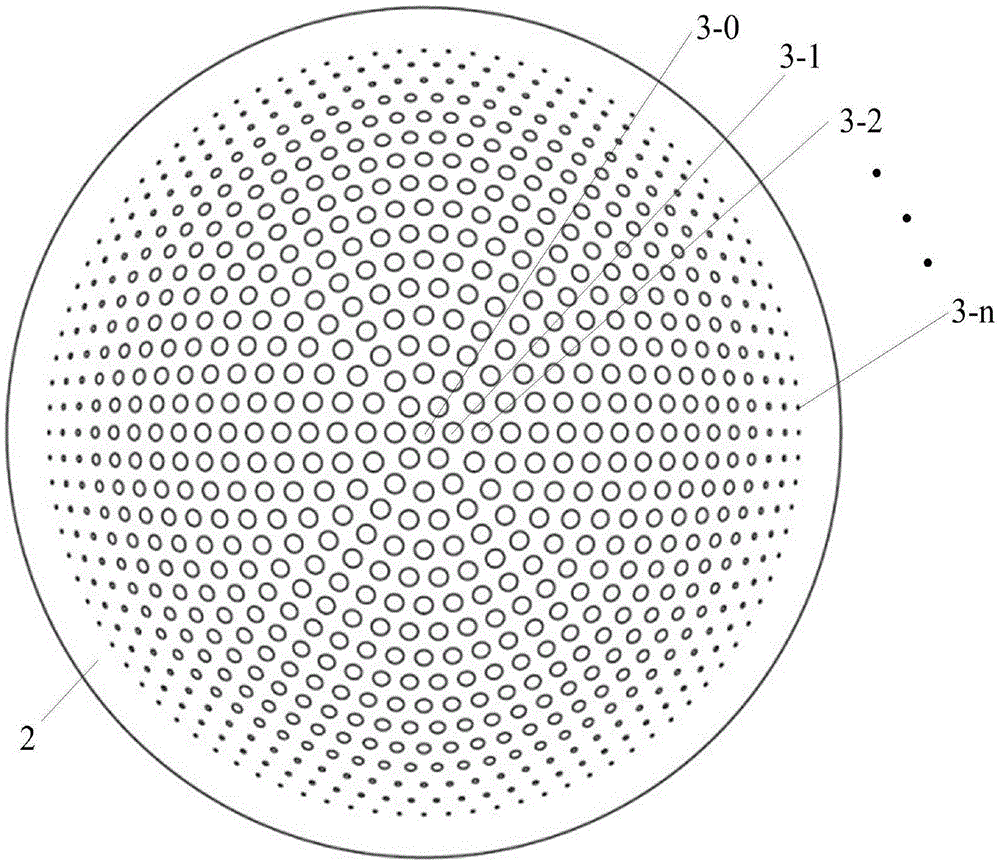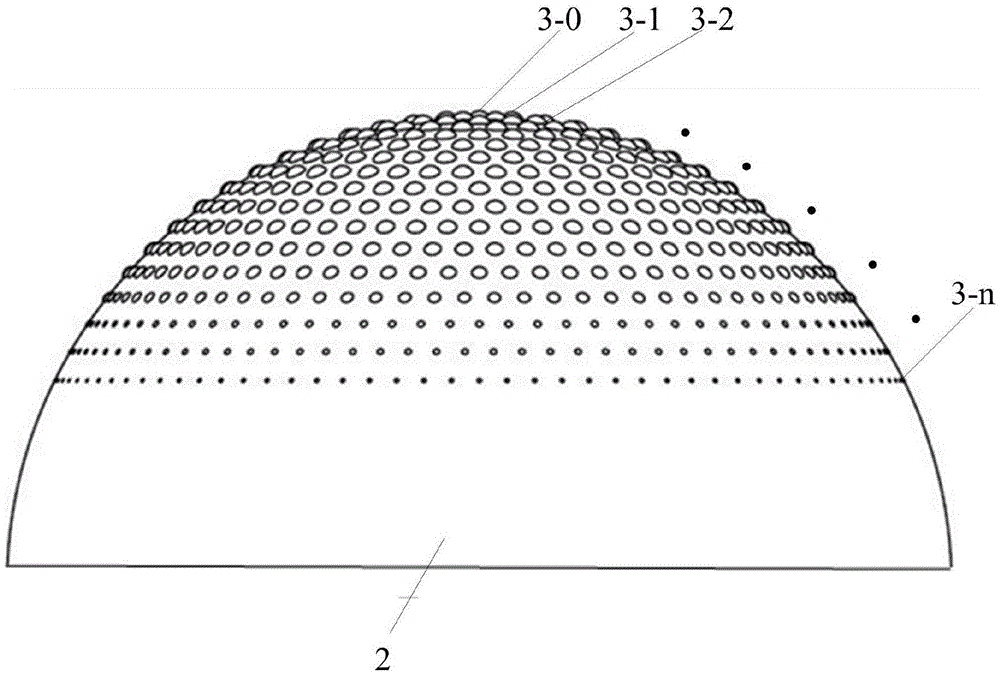Curved-surface bionic compound eye imaging device for zoom lens array
A lens array, bionic compound eye technology, applied in the directions of lenses, optics, instruments, etc., can solve the problems of reduced imaging quality, poor resolution, difficult optical splicing, etc., to achieve easy manufacturing and maintenance, avoid out-of-focus state, and easy miniaturization. Effect
- Summary
- Abstract
- Description
- Claims
- Application Information
AI Technical Summary
Problems solved by technology
Method used
Image
Examples
Embodiment Construction
[0022] The present invention will be described in further detail below in conjunction with the accompanying drawings.
[0023] Such as Figure 1 to Figure 5 As shown, the curved surface bionic compound eye imaging device of the gradient focal length lens array of the present invention includes a photoelectric image sensor 1 , a glass spherical shell 2 , a lens array 3 , a mesh-shaped metal hole array 4 and a flat glass substrate 5 . The single-eye lens in the lens array 3 comprises n stages, and the single-eye lens positioned at the center of the array is counted as the 0-level single-eye lens 3-0, and the vertical distance from the center of the circular surface base of the single-eye lens to the photoelectric image sensor is counted as l 0 . The single-eye lens subsystems of other peripheral levels in the array are counted step by step as first-level single-eye lens 3-1, second-level single-eye lens 3-2...n-level single-eye lens 3-n, and the center of the circular base of e...
PUM
 Login to View More
Login to View More Abstract
Description
Claims
Application Information
 Login to View More
Login to View More - R&D
- Intellectual Property
- Life Sciences
- Materials
- Tech Scout
- Unparalleled Data Quality
- Higher Quality Content
- 60% Fewer Hallucinations
Browse by: Latest US Patents, China's latest patents, Technical Efficacy Thesaurus, Application Domain, Technology Topic, Popular Technical Reports.
© 2025 PatSnap. All rights reserved.Legal|Privacy policy|Modern Slavery Act Transparency Statement|Sitemap|About US| Contact US: help@patsnap.com



